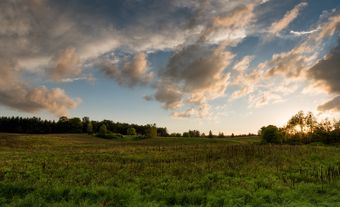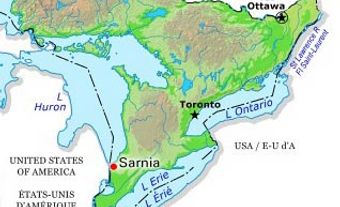Collingwood, Ont, incorporated as a town in 1858, population 19 241 (2011c), 17 290 (2006c). The Town of Collingwood is located on Nottawasaga Bay at the southern end of Georgian Bay, 55 km northwest of Barrie. A battle site where the Huron tried to fight off invading Iroquois (1649-50), it was first settled by Europeans in 1835. The name commemorates Admiral Collingwood, Lord Nelson's second-in-command at the Battle of Trafalgar.
The Ontario, Simcoe and Huron Railway, later part of the Canadian National Railway, arrived in 1855. Along with its excellent harbour, surveyed by Sandford Fleming, the railway made Collingwood an important shipping port. From 1883 to 1986 it was the shipbuilding centre for the Great Lakes. The harbour has now been transformed with gardens and interpretive walkways.
Today the town's economy is based on manufacturing of auto parts, wood, food and beverages. A shortline railway that Collingwood and the city of Barrie purchased from CN Rail in 1998 supports the manufacturing sector. Collingwood is a popular winter ski resort, and in the summer the scenic limestone caves of the Niagara Escarpment attract tourists. It is also famous for its Blue Mountain pottery, made from local red clay and originally manufactured after World War II by Jozo Weider, a Czechoslovakian refugee.

 Share on Facebook
Share on Facebook Share on X
Share on X Share by Email
Share by Email Share on Google Classroom
Share on Google Classroom


